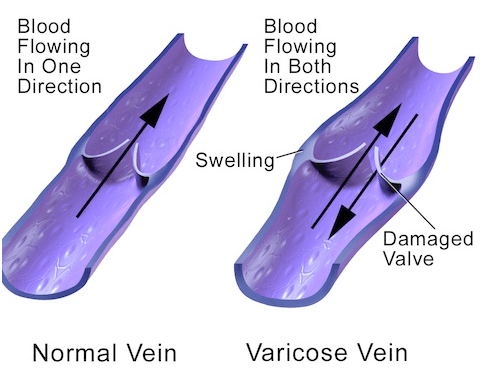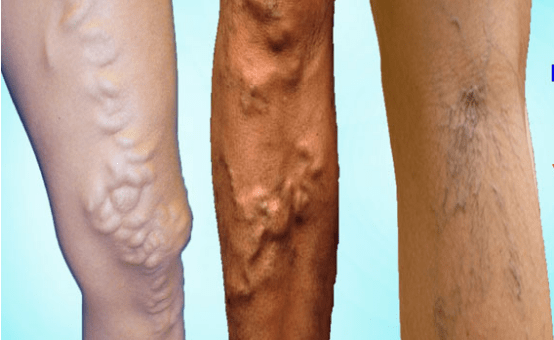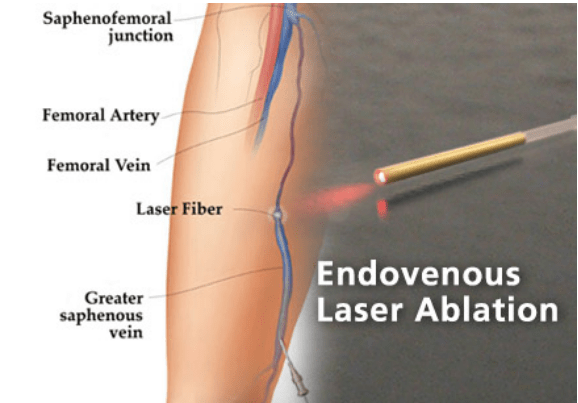What are Varicose Veins
Varicose veins are superficial veins that have become enlarged and are often twisted abnormally. They can become visibly prominent and in some patients cause symptoms. They get commoner as patients get older and are more common in women than men.
They are caused by a malfunction in the values of veins that allows blood to flow in the wrong direction back down the leg, thereby causing swelling.

Symptoms of varicose veins
The symptoms associated with varicose veins can vary quite a bit and can be vague.
· General aching in the legs
· A feeling of heaviness in the legs
· Swelling in the legs
· Restless legs
· Itching or burning sensations
· Unsightly bulges from the veins
· Can lead to ulcer formation (But the risk is small. Around 1% over a lifetime)
Because varicose veins are due to blood flowing back down the leg in the wrong direction, symptoms are often worse at the end of the day or after long periods of standing. Putting your legs up can therefore also help.

Diagnosis
Varicose veins can usually be diagnosed during a simple consultation with a vascular surgeon. However, the character, position and extent of varicosities needs to be determined using a duplex ultrasound scan. This also gives information to your surgeon about the condition of the deep veins and suitability for some of the treatment options.
Treatment of Varicose Veins
Principle
The principle of DILA 980nm&1470nm is based on the thermal effect of the laser: it's a thermal ablation of the vessel wall.
The 1470nm, which has a higher absorption in the tissues, improves the post-op comfort for the patient, while ensuring the optimal efficacy of treatment.
Endothermal ablation
The majority of varicose veins can be treated this way and can usually be performed under a local anaesthetic which means you will often be able to leave within half and hour of being treated.
Endothermal ablation is carried out either by a laser fibre (EVLT) being passed into the abnormal vein under ultrasound guidance. The fibre is placed in the correct position inside of the vein and then a local anaesthetic solution is placed up the leg along side the vein. This solution provides anaesthetic but also protects the surrounding tissues from the heat. Once this is done the surgeon activates the fibre and the vein is heated from the inside. This causes the walls of the vein to stick together and so blood can no longer flow backwards in the wrong direction.


Previous:About Laser Therapy Treatment
